Hydrangeas can thrive in the shade and they hate frost so it is ideal conditions.
Gunnera
The garden is also famous for it Gunnera Passage which are also known as Giant Brazilian Rhubarb.
'It's awesome' Christine says and twice her height and the leaves twice as big as her so she wonders how the 'heck' do they look after it.
Darren says it looks after itself and all they need to do is trim any dead or drooping over leaves in the summer and just do a tidy up.
In October when it is starting to die back they take the whole lot down.
Christine says so this all grows again in the Spring producing fantastic flowers.
She gets very excited at the frothy part of the Gunnera declaring 'I want to be a dinosaur'.
The leaves can grow up to 2.5 meters wide.
Darren says they will tidy them up using a machete and use them for ground cover for the shoots.
A machete always fun for gardeners says Darren, yes good plan to give it to an over excited Christine!
Christine with machete in hand gets chopping and hopefully not their legs.
She had an amazing time chopping these huge plants from underneath.
The Gunnera Valley may look like a jungle but they keep it in shape as much as the rest of the garden.
The soil in the Cornish climate is great for growing but you do have to then keep on top of the weeds and pruning as they can quickly get out of hand.
Glasney Green-Space Regeneration Project
Up the coast is the ancient harbour of Penryn and on the edge of the towns woodland is an area that become neglected and over grown.
Pip Carlton-Barnes is co-ordinating the clear up and the aim is to keep it clean, usable and a lovely place to visit.
A place to just listen to the birds, play football and relax in.
Today job for Pip and the team are to clear the corner of the woodland and river and to tackle the brambles.
Some of the volunteers used to play there as youngsters and said it used to be full of children and they hope for that again.
Some children are helping today like Barnaby who is with his dad and he comes down to the valley with his friends to build dens and play hide and seek.
Once its cleared up he hopes more people will come and visit as well as to see the wildlife.
There is also the Town's history in the area and they find a paved area that could have been the bottom of a swimming or paddling pool.
In years to come Christine hopes the locals will keep on appreciating this area.
Pip says they appreciate there is lots to do and wont happen over night but they all give up their time and are committed to this long project.
As the workers break for pasties, Cornish of course and a drink Christine says its great what they have achieved in just 1 day and it wont be long until the sound of children having fun returns.
Trebah Garden
Marcus grew up with Trebah as his own playground as his father was the Head Gardener and at that time it was a private garden.
This made it a hidden secret that only a few people knew existed and as a 7 year old boy this was a paradise he spent his days running around wildly.
As an adult Marcus left Cornwall but came back when he retired and now works at Trebah 1 day a week as a Volunteer Gardener.
He says there is no better place in the World.
Christine asks him about the atmosphere as him as a 7 year old at Trebah.
Marcus describes it as 'unfettered fun' and the gardens were anything he wanted them to be in his imagination.
As an adult and as a Volunteer at the gardens it is an opportunity to relive his childhood memories as well as doing something practical for the garden to preserve it.
Trebah has imprinted itself in his heart after growing up there and now he can put something back into the garden.
As a volunteer he meets and speaks to visitors and enjoys hearing how they love the garden and are amazed by it.
The view down the valley beats anything that other gardens have to offer and it surrounds and encapsulates you.
Christine tells him how lucky he is and Marcus agrees.
The Beach at Trebah
At the very end of the garden the valley opens into the Helford river, then the estuary and the sea and its very peaceful.
70 years before the beach in 1944 which is 200 miles from Normandy played its part in the events of D-Day.
Sylvia was a child when the Americans came to the village and it was all the noise she remembers as the troops came through.
In May 1943, more than 7,000 soldiers from the 20th US Infantry Division arrived in Cornwall to prepare for the invasion of France for Operation Overlord.
Trebah had been chosen for the embarkation because the boats can get close to the shore.
The American troops widened the access road to the shore and laid a hard standing and built jetties.
Sylvia was on the beach when they were building the pier and all of a sudden aeroplanes swooped up the river and she thought they were letting off fireworks, but they were in fact firing at the men building the pier.
The children thought it was very exciting and were upset when their parents made them come indoors to safety.
The troops spent a whole year preparing for D-Day and Sylvia and friends had a new playground made by the soldiers who camp was at Bosveal Crossroads who would give them sweets, wool and knitting needles.
On 1st June 1944 the soldiers had all gone and Sylvie said it was very eerie that they had just all left as suddenly as they appeared.
The men of the 29th Infantry Division were part of the assault on Omaha Beach on Normandy and by the end of D-Day on 6th June, 2,500 Americans were killed on that beach alone.
There is a memorial on the shore at Trebah to the men who lost their lives that day and locals like Sylvia will never forget them and how this part of Cornwall played its part in D-Day.
St Michael's Mount
After the Norman conquest in 1066 the island of St Michael's Mount was given to France and the Monastery of Mont Saint-Michel and the monks built a priory on top and it was a place of pilgrimage.
There is no longer monks there but it is now an island community with 30 permanent residence which welcome a quarter of a million visitors each year.
They come to see the castle but it has equally wonderful gardens they then discover which has exotic species grown on this granite island prone to the Atlantic winds.
Christine meets Assistant Head Gardener Darren Little (who is now Head Gardener) who is a local.
She asks him what brought him to work here? Darren say his parents lived on the Island so he was brought up there and it was a brilliant with the sea all around you and loads of activities.
He now has his own young children and they are now enjoying all what he did on the Island.
Darren has worked here since 2000 and after growing up here, he knows the garden very well, probably better than anyone.
The Island garden is made up of 3 areas, the northern side is evergreen shrubs, the South-eastern side is the sub-tropical garden and the west side with its barren cliffs.
The garden is open to the elements with the salt spray coming in the garden and they adapt by working in a part of the garden that is sheltered from the current weather.
Succulents
Today Darren and his team are putting in plants on the West side on the cliffs and are planting Succulents.
They are a huge group of plants that can grow big like Agaves or ground hugging like Echeverias.
They like hot, dry conditions and conserve water in their fleshy leaves or stems they do not need a lot of soil to grow in and live in cracks and crevices naturally.
They can also been grown indoors if you do not have the right conditions outdoors.
The succulents look so natural on the Mount but they have all been carefully situated.
The cliffs are over 25 meters high and Darren and his team every 2 months, need to check these and plant new ones on the cliff face.
Christine offered to help which means abseiling over the cliff edge!
Once she is kitted out in all the correct safety gear she is quickly walking down the cliff face like a pro.
They are making full use of all the garden including the vertical parts and hope to fill them with plants, Christine says if she returns in 10 years she will be fascinated to see how much is growing there. Darren says in even 5 years it would change a lot.
She makes a fist sized planting pocket in the cliff and plants an Aeonium Balsamiferum that looks right at home.
Christine says she never planted up a cliff face before and is soon planting another plant a Aeonium.
She is so glad she was brave enough to do her first Abseil and see the fantastic view she is 'quite chuffed' that she also left her mark on the cliff with the new plants.
She says 'it's brew time' as they descend to the bottom of the cliff for a well earned cuppa.
The Minack Theatre
Every season there are 16 different productions staged here, a new one every week during the summer and is one of the top tourist attractions in Cornwall.
The Theatre is the life work of its creator Rowena Cade who built it by hand along with her Gardeners.
She was born in 1893 and the whole family loved dressing up and staging plays.
When her Father died she moved to Cornwall with her Mother who bought the headland and built a home.
Rowena did not have to work but needed something to do so in 1931 she built a cliff top stage for the local Amateur Dramatic Societies production of The Tempest.
Zoe Curnow first came to work here as a student but is now the General Manager and says what hard physical work it was to turn it into a flat stage area on the cliff.
Originally there were rough terraced seating and all had to be moved by wheelbarrow which were full of rocks.
At the time The Times ran an article about the production and its unusual location and this made Rowena to plan to keep putting on plays.
Over the next 60 years Rowan put all her money, time and effort into the Theatre.
People who visit are amazed that it was financed and built by just 1 lady.
For the 5th Summer Actor and Story Teller Craig Johnson has held his show at Minack and he says you get such a mixed audience of ages and from where they are from You can see by their faces they have never been to a Theatre like it before.
Trebah Gardens
Christine returns to Trebah for a last stroll through with Gardener Darren and Volunteer Marcus.
Marcus's Father was the Head Gardener when he was a boy and helped to create one of her favourite bits of the garden, the Hydrangeas.
Marcus says he is very proud of this and is reminded of it every time he walks through the valley.
He says Cornwall is his home although he has travelled elsewhere and lived in London and Devon.
Christine asks Darren what are his plans to move the garden forward? He says you have to remember the garden is there for the visitors and they will develop different themes and do more diverse things in the garden like Theatre productions.
They have just built a new Amphitheatre to put on productions, they will light up the trees, put on Autumn walks, to see the garden in a different light.
Sound is always good in the garden and the garden should highlight all your senses.
Christine says they have both reminded her how important it is to use all your senses in the garden.
Treverva Male Voice Choir
Use your ears to hear, nature's symphony in the garden and Christine wants to create a lasting musical memory for the people she has met at Trebah.
The Cornish choirs, like the Welsh have links to the Mining Industry but in Cornwall they dug for Tin.
In the 19th Century mines stretched deep underground in Cornwall and became the biggest producer of Tin in the world and each mine had its own choir.
The last Tin mine closed in 1998 when there was no more Tin left to mine but the choirs carried on with members from all walks of life and different ages.
Norman Hyde is their longest standing member and says why singing was so important to the Miners as they went down in lifts 100s of feet underground and they would sing as they went down to keep their spirits up.
They were like 'rats in a hole' on their hands and knees as at that time the tunnels were not so big and the singing carried them through.
The Choir are rehearsing the most famous Cornish song The White Rose and this means a lot to Norman with the verse that starts 'the first time I met you my darling' for when he first met his wife, when on leave.
They were married for 65 years but she sadly died 5 years before and 4 months later sadly he also lost his daughter and if it wasn't for choir he would not be here now as it helped him through his grief.
The choir is about keeping the traditions alive, about community, friendship and creating memories.
Trebah Gardens
Christine has arranged a special outdoor performance by the choir as a thank you for having her in their gardens.
Norman is also celebrating his 68th year today, that he joined the choir, so it is a very special day for him and the choir too.
The choir has been going since 1936 but this is the first time the choir has ever sung at Trebah.
Friends and family of the choir as well as the staff from Trebah have all been invited with the guests of honour being Marcus whose Father was responsible for the Hydrangea Valley and Darren Head Gardener.
Christine tells them what an amazing and special day she has had and the common thread of the day has been the special atmosphere at Trebah and its magnificent location.
She hopes they are going to appreciate the special moment the choir sings there.
The choir sings The White Rose of course.
Marcus thanks the choir saying they have made his year and Christine thanks the choir and Trebah.
She has visited the garden many times but she never thought she would hear a Cornish Choir singing in the best Cornish Garden.
Christine says its been a privilege to visit 2 of her favourite gardens and to meet the people and their memories and she leaves with 'a song in my heart'.

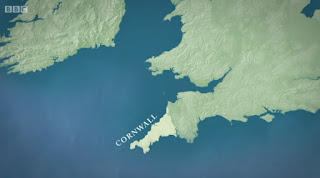

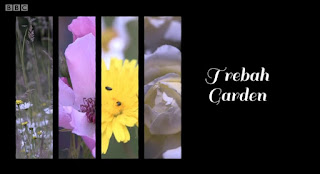
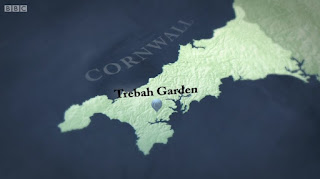
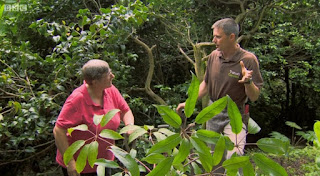
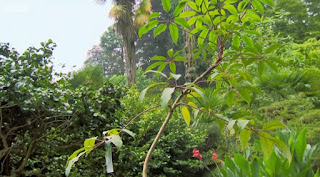
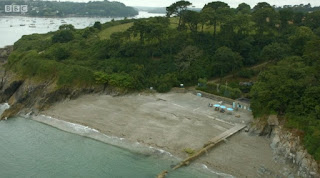
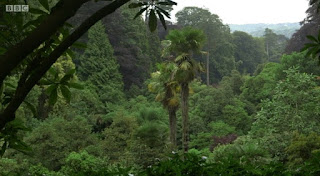
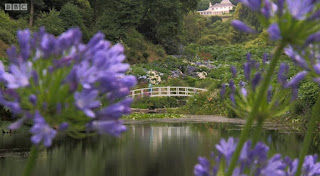



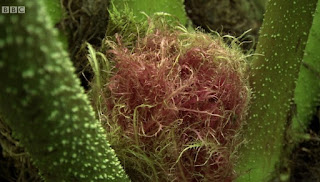
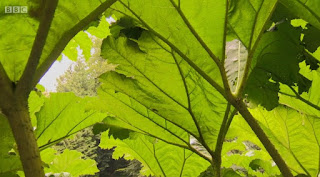
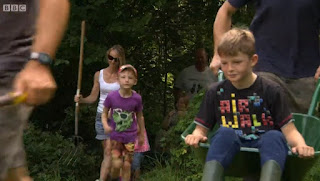
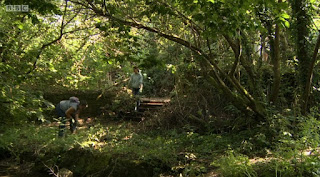


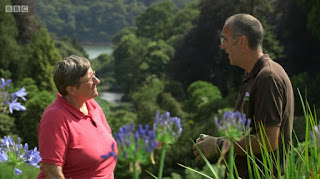
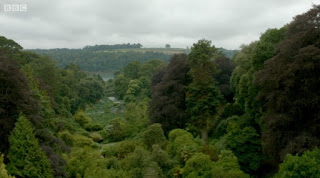


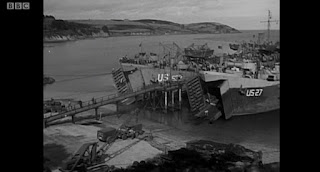
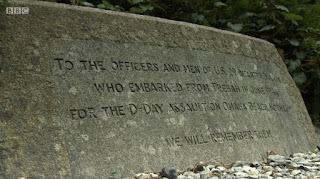
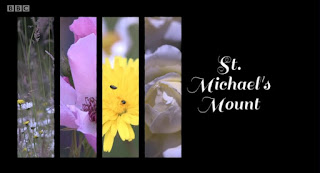
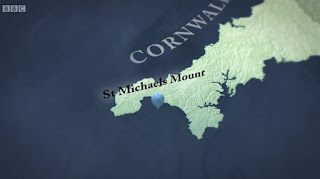
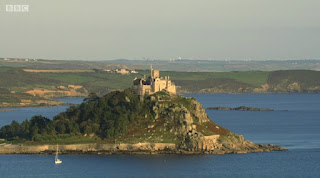

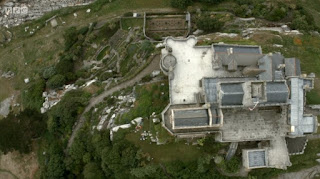


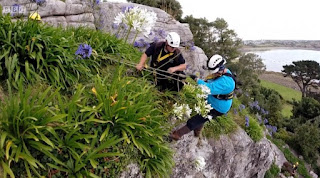

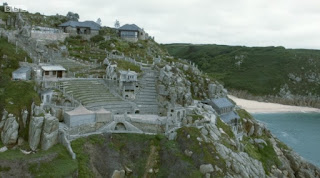
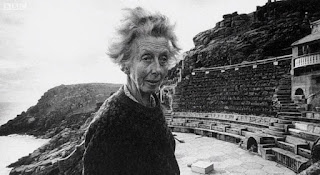
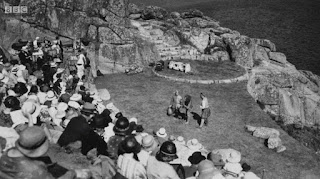

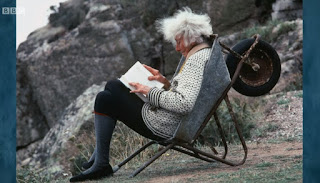

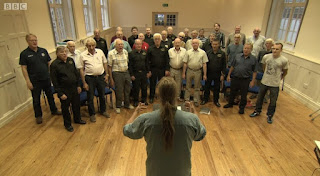


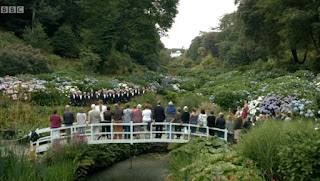


No comments:
Post a Comment